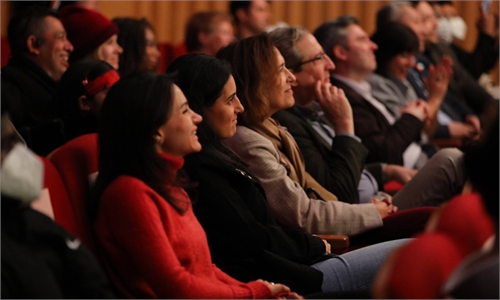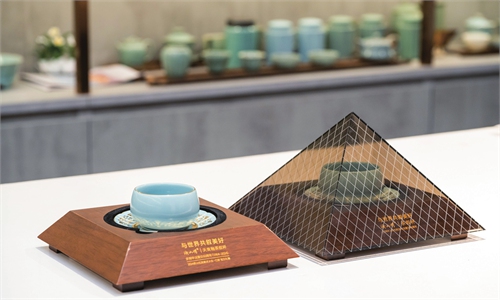ARTS / ART
Gao Dianliang brings innovation to the only painted paper-cutting
Cutting with dedication
Editor's Note:
From exquisite craftsmanship to traditional Chinese medicine, from solemn rituals to vibrant folk art, intangible cultural heritage weaves the vibrant tapestry of Chinese identity, enriching contemporary Chinese people's lives. In this series, the Global Times culture desk will walk readers through China's most renowned traditions. For centuries, the essential elements of Chinese intangible cultural heritage have been passed down from master to apprentice, from generation to generation.
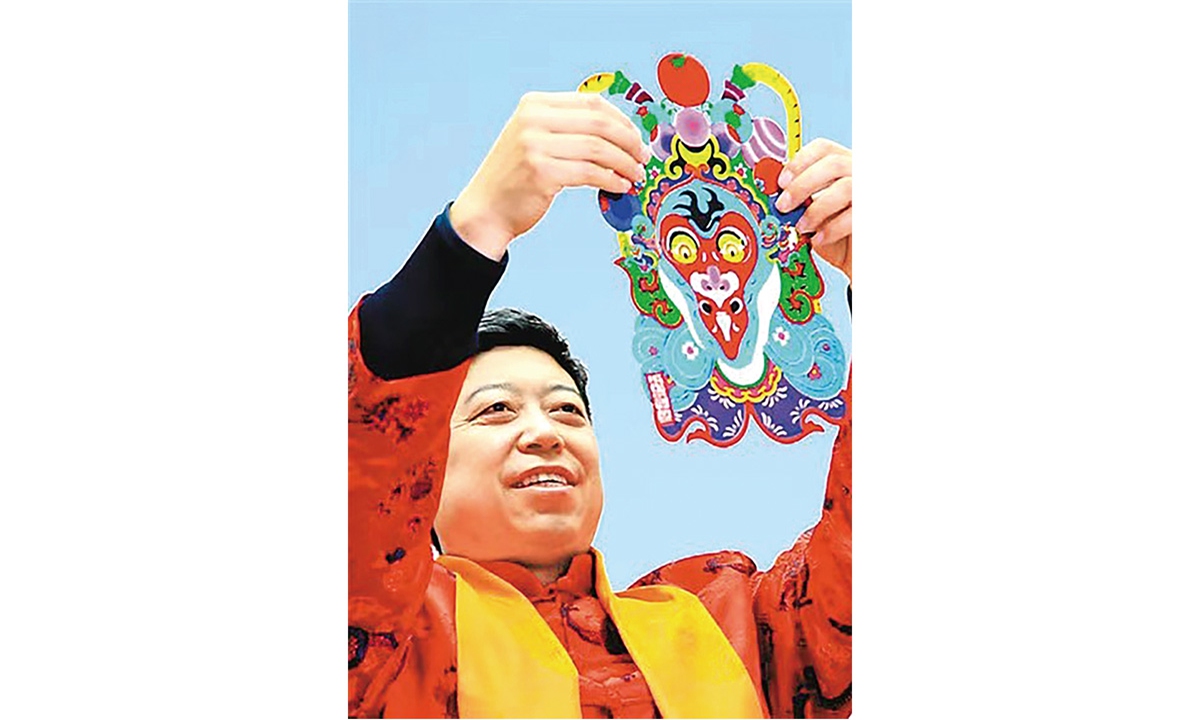
In October, a major exhibition of Gao Dianliang's exquisite paper-cutting works opened at Beijing Baoguo Temple, attracting art lovers, cultural scholars, locals, and tourists alike. Gao, a key inheritor of Yuxian's paper-cutting tradition, has garnered a growing following among young people.
"As an intangible cultural heritage, paper-cutting goes far beyond the patterns, shapes, or colors we see," Gao told the Global Times. "It's a powerful vessel of traditional Chinese culture, with designs and colors reflecting core values like 'yin and yang,' 'symmetry,' 'harmony,' and 'artistic mood.'"
"As long as the culture of the Chinese nation endures, paper-cutting remains the most effective and genuine vessel for preserving and passing down our national culture," he added.
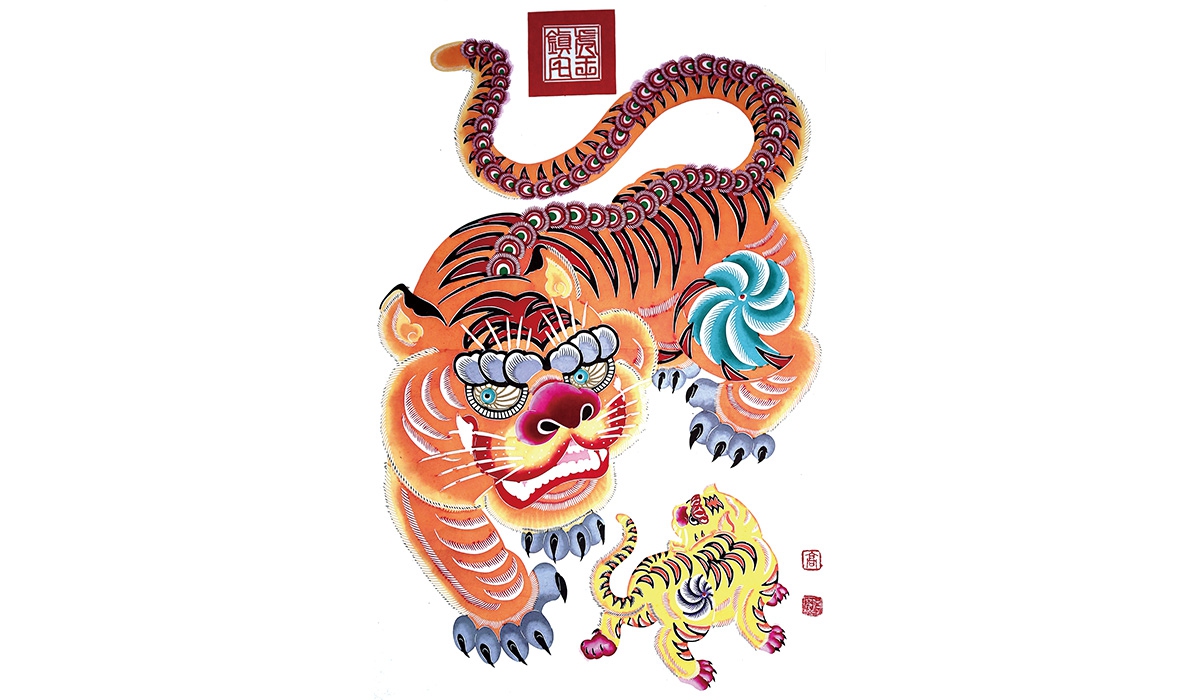
Originating in China's Ming Dynasty (1368-1644), Yuxian paper-cutting evolved starting from rural window decorations and turning into a distinctive art form. Unlike most Chinese paper-cutting, Yuxian's craft is not "cut" but "carved." The technique uses Xuan paper meticulously sculpted with a small, sharp knife and later hand-painted with vibrant colors, a process that makes it the only painted paper-cutting style in China.
Raised in a family practicing Yuxian paper-cutting, Gao grew up steeped in this art, beginning his training at the age of six, under the guidance of renowned masters. Over decades of dedication, he has not only honed his skills but also brought innovation to the craft. "China's illustrious paintings and calligraphy have deeply influenced my work," Gao said. "For instance, I drew inspiration from Zhang Zeduan's Along the River During the Qingming Festival from the Northern Song Dynasty (960-1127), Wang Xizhi's Lanting Xu (Preface to the Poems Composed at the Orchid Pavilion) from Eastern Jin (317-420), and Han Huang's Five Oxen from the Tang Dynasty (618-907). Learning from these masters and drawing from their finest works keeps their tradition and spirit alive."
In 1998, Gao created a 54-meter-long, 1.8-meter-high paper-cutting version of Along the River During the Qingming Festival, filling a gap in classical Yuxian masterpieces and setting a record in China's paper-cutting history.
"True craftsmanship in paper-cutting means striving for greatness," he said. "It's about reaching the peak of skill, creating unprecedented work, and mastering artistry that honors the past and paves the way forward. A craftsman must also stand as a role model in character, setting an example for others in the field."
With this level of dedication, Gao has mastered the skill of carving 50 fine lines into a strip of Xuan paper just 5 centimeters wide, capturing intricate details like facial hair with lifelike precision. In 2008, his portrait paper-cuts of former International Olympic Committee (IOC) presidents, including Jacques Rogge and Juan Antonio Samaranch, were showcased during the Beijing Olympics and later acquired by the Chinese Olympic Committee.
"The essence of intangible heritage lies in the traditional tools and the unique artistry of the creator," he noted. "To truly carry on paper-cutting, an inheritor must have the skill, cultural knowledge, and depth."
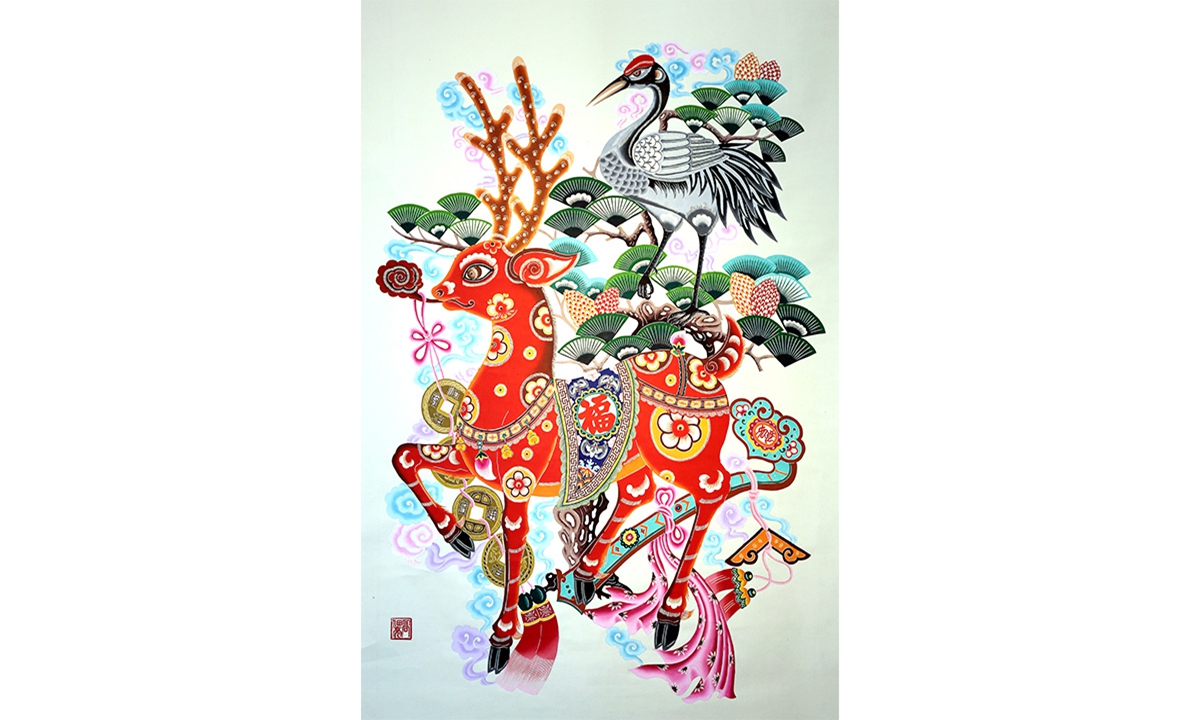
"The development of traditional arts cannot thrive without market recognition and the passing down of skills," Gao said. As an inheritor of intangible cultural heritage, Gao attaches great importance to the inheritance, development, and academic research of Yuxian paper-cutting.
According to Gao, paper-cutting is a popular folk art enjoyed by people from all walks of life, with a strong following among younger generations. Recognizing its potential for growth, he introduced Yuxian paper-cutting into local primary school curricula, establishing his studio as a teaching center for this art form, where more than 300 emerging artists have been trained.
"The future of Yuxian paper-cutting will not be characterized by clinging to the past," Gao said. "On the contrary, it will stand firmly in the present, preserving traditional techniques, while at the same time integrating new ideas that resonate with contemporary life. Using art to express cultural confidence in relatable forms keeps the tradition vibrant." He believes that the journey of passing down Yuxian paper-cutting has only just begun and that the craftsman's spirit of relentless refinement will keep it alive and growing in a competitive market.
"Innovation is the life force of paper-cutting!" Gao often says. In 2015, he established the Gao Dianliang Paper-Cutting Innovation Studio, bringing together a team of folk artists focused on pushing the boundaries of this art.
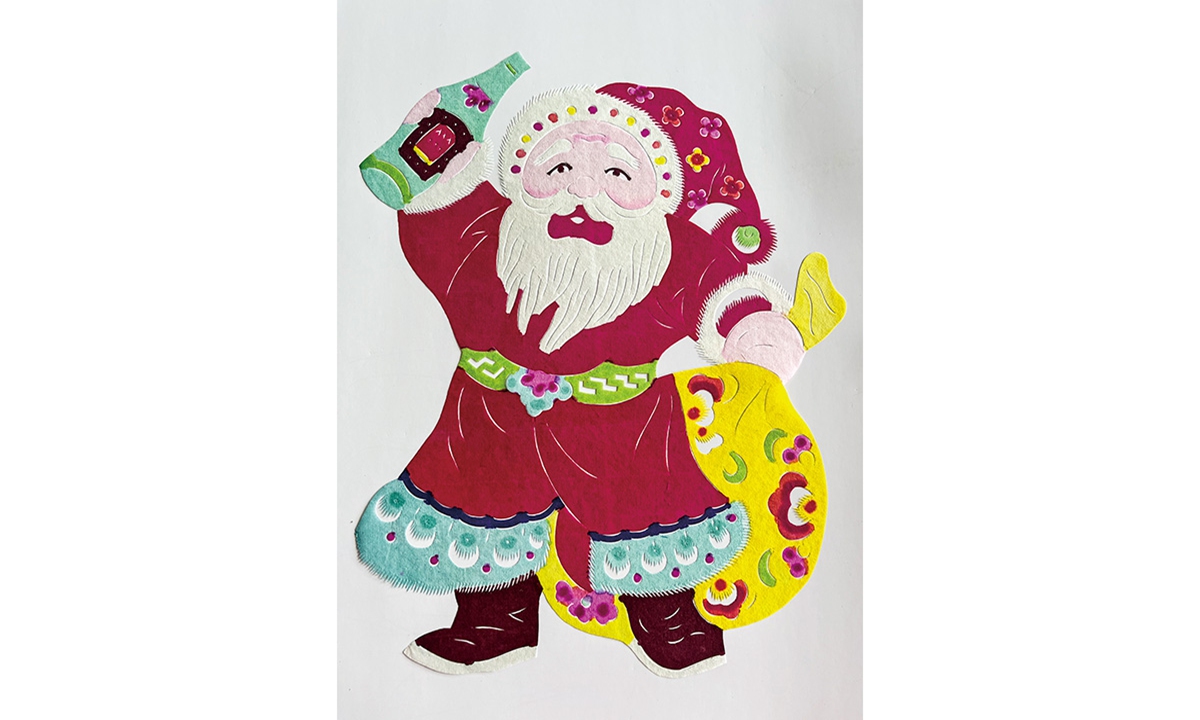
For Gao, art without innovation lacks vitality. Through careful research and a connection to contemporary themes, his studio has developed unique products such as calendars and greeting card sets, framed artworks, and decorative scrolls.
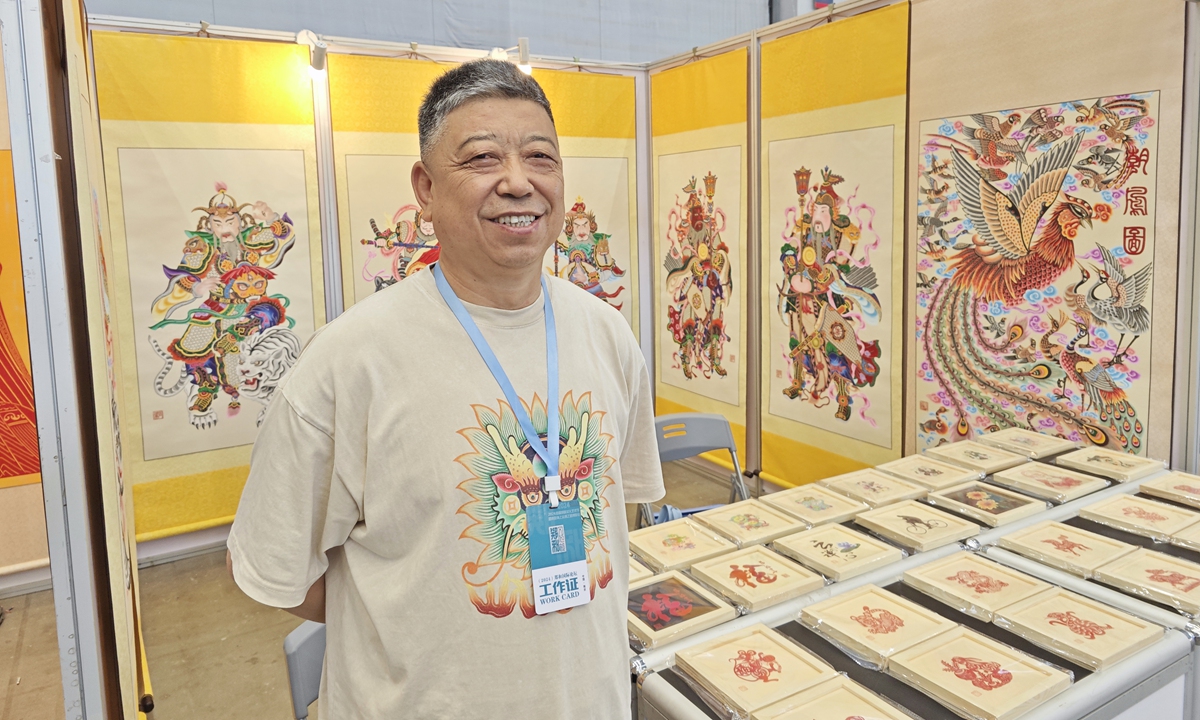

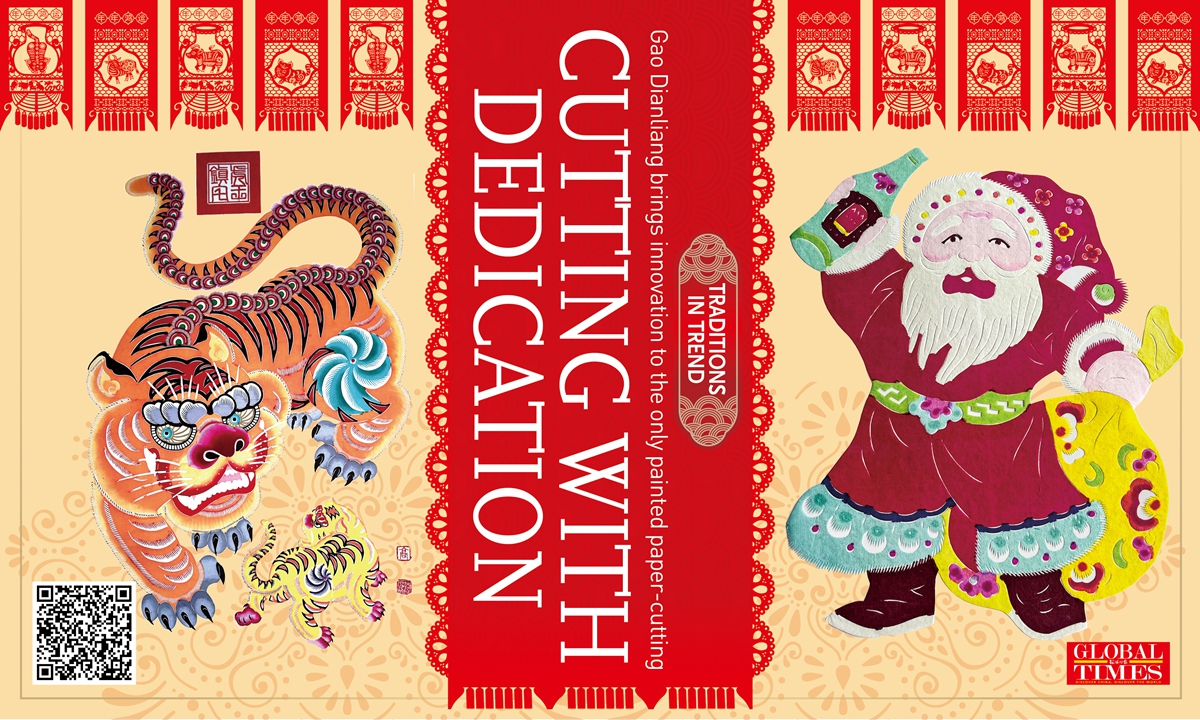
From exquisite craftsmanship to traditional Chinese medicine, from solemn rituals to vibrant folk art, intangible cultural heritage weaves the vibrant tapestry of Chinese identity, enriching contemporary Chinese people's lives. In this series, the Global Times culture desk will walk readers through China's most renowned traditions. For centuries, the essential elements of Chinese intangible cultural heritage have been passed down from master to apprentice, from generation to generation.

Gao Dianliang, an intangible cultural heritage inheritor in paper-cutting Photos: Courtesy of Gao Dianliang
"With strokes that dance along the blade, bringing characters vividly to life; within each piece lies a poem, exuding profound charm" - this is how experts describe the paper-cutting from Yuxian county, North China's Hebei Province, which is recognized as a UNESCO Intangible Cultural Heritage.In October, a major exhibition of Gao Dianliang's exquisite paper-cutting works opened at Beijing Baoguo Temple, attracting art lovers, cultural scholars, locals, and tourists alike. Gao, a key inheritor of Yuxian's paper-cutting tradition, has garnered a growing following among young people.
"As an intangible cultural heritage, paper-cutting goes far beyond the patterns, shapes, or colors we see," Gao told the Global Times. "It's a powerful vessel of traditional Chinese culture, with designs and colors reflecting core values like 'yin and yang,' 'symmetry,' 'harmony,' and 'artistic mood.'"
"As long as the culture of the Chinese nation endures, paper-cutting remains the most effective and genuine vessel for preserving and passing down our national culture," he added.

Gao Dianliang's paper-cutting work Tiger Parent and Cub
Reviving traditionOriginating in China's Ming Dynasty (1368-1644), Yuxian paper-cutting evolved starting from rural window decorations and turning into a distinctive art form. Unlike most Chinese paper-cutting, Yuxian's craft is not "cut" but "carved." The technique uses Xuan paper meticulously sculpted with a small, sharp knife and later hand-painted with vibrant colors, a process that makes it the only painted paper-cutting style in China.
Raised in a family practicing Yuxian paper-cutting, Gao grew up steeped in this art, beginning his training at the age of six, under the guidance of renowned masters. Over decades of dedication, he has not only honed his skills but also brought innovation to the craft. "China's illustrious paintings and calligraphy have deeply influenced my work," Gao said. "For instance, I drew inspiration from Zhang Zeduan's Along the River During the Qingming Festival from the Northern Song Dynasty (960-1127), Wang Xizhi's Lanting Xu (Preface to the Poems Composed at the Orchid Pavilion) from Eastern Jin (317-420), and Han Huang's Five Oxen from the Tang Dynasty (618-907). Learning from these masters and drawing from their finest works keeps their tradition and spirit alive."
"True craftsmanship in paper-cutting means striving for greatness," he said. "It's about reaching the peak of skill, creating unprecedented work, and mastering artistry that honors the past and paves the way forward. A craftsman must also stand as a role model in character, setting an example for others in the field."
With this level of dedication, Gao has mastered the skill of carving 50 fine lines into a strip of Xuan paper just 5 centimeters wide, capturing intricate details like facial hair with lifelike precision. In 2008, his portrait paper-cuts of former International Olympic Committee (IOC) presidents, including Jacques Rogge and Juan Antonio Samaranch, were showcased during the Beijing Olympics and later acquired by the Chinese Olympic Committee.
"The essence of intangible heritage lies in the traditional tools and the unique artistry of the creator," he noted. "To truly carry on paper-cutting, an inheritor must have the skill, cultural knowledge, and depth."

Gao Dianliang's paper-cutting work Spring harmony of crane and deer
Embracing future"The development of traditional arts cannot thrive without market recognition and the passing down of skills," Gao said. As an inheritor of intangible cultural heritage, Gao attaches great importance to the inheritance, development, and academic research of Yuxian paper-cutting.
According to Gao, paper-cutting is a popular folk art enjoyed by people from all walks of life, with a strong following among younger generations. Recognizing its potential for growth, he introduced Yuxian paper-cutting into local primary school curricula, establishing his studio as a teaching center for this art form, where more than 300 emerging artists have been trained.
"The future of Yuxian paper-cutting will not be characterized by clinging to the past," Gao said. "On the contrary, it will stand firmly in the present, preserving traditional techniques, while at the same time integrating new ideas that resonate with contemporary life. Using art to express cultural confidence in relatable forms keeps the tradition vibrant." He believes that the journey of passing down Yuxian paper-cutting has only just begun and that the craftsman's spirit of relentless refinement will keep it alive and growing in a competitive market.
"Innovation is the life force of paper-cutting!" Gao often says. In 2015, he established the Gao Dianliang Paper-Cutting Innovation Studio, bringing together a team of folk artists focused on pushing the boundaries of this art.

Gao Dianliang's paper-cutting work Santa Claus
Through Gao's influence, paper-cutting has evolved into a versatile artistic medium. "We've expanded from traditional themes like opera masks, historical figures, and auspicious animals to more than 20 series, including scenic landscapes, famous literary characters, calligraphy, modern cartoons, and global motifs. With over 30,000 products, our works now reach nearly 100 countries," he noted.For Gao, art without innovation lacks vitality. Through careful research and a connection to contemporary themes, his studio has developed unique products such as calendars and greeting card sets, framed artworks, and decorative scrolls.

Gao Dianliang, a key inheritor of Yuxian's paper-cutting tradition, at the first Zheng He Cultural and Art Festival, alongside the Nanjing Maritime Silk Road Expo, opened at the Nanjing International Expo Center on July 11, 2024, which is also the Maritime Day of China
"I can see the footprints of Chinese cultural progress in Gao's work," said Zhao Fengmei, a Yuxian paper-cutting collector. "Through exhibitions, classes, and by circulating paper-cutting as gifts and keepsakes, Gao is allowing younger generations to experience the enduring charm of this traditional art. Its allure will never fade."

